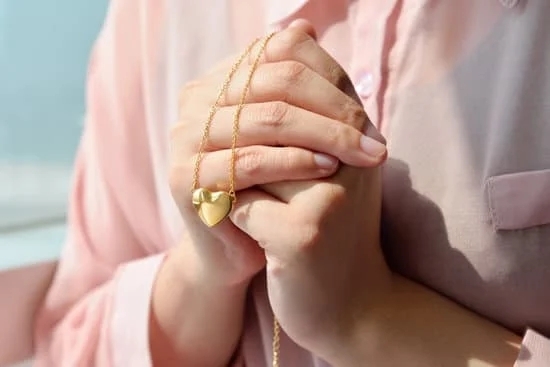For centuries, pearls have captivated the imagination and desires of royalty, fashion icons, and jewelry aficionados alike. These luminous gemstones symbolize elegance and sophistication in a way few other materials can.
In this article, we’ll explore the fascinating world of pearls: natural vs. cultured – what you need to know to distinguish between these two captivating types. Whether you’re an experienced collector or simply someone with an appreciation for beauty, understanding the differences could elevate your appreciation and investment strategies.
Historically, natural pearls were revered treasures that often demanded immense costs due to their rarity and organic formation process. Ancient civilizations cherished them as symbols of wealth and power; Cleopatra famously dissolved a pearl in vinegar to win a bet about her culinary prowess. These moments in history underscore the timeless appeal of natural pearls, which were not only beautiful but also extraordinarily rare.
Fast forward to the early 20th century when innovations in pearl farming, most notably by Kokichi Mikimoto, revolutionized the industry with cultured pearls. Unlike their natural counterparts found serendipitously within wild oysters or mussels, cultured pearls are cultivated under controlled conditions that allow consistent production without compromising on luster or quality. This development didn’t just make pearls more accessible; it transformed them into versatile options available in various colors, shapes, and sizes tailored for any occasion.
What Are Natural Pearls?
Natural pearls are treasures born from the depths of the ocean, formed through an organic and uninterrupted process. These gemstones start their journey when a foreign substance, such as a grain of sand or a parasite, accidentally enters an oyster or mollusk.
In response to this irritant, the mollusk secretes layers of nacre-a mixture of aragonite and conchiolin-over time, eventually creating a pearl. This natural formation can take several years to complete, depending on various environmental factors and the type of mollusk.
Historically, natural pearls have held immense value and were often reserved for royalty and the elite due to their rarity. Before the discovery of cultured pearl farming techniques in the early 20th century, natural pearls were predominantly harvested from regions such as the Persian Gulf, Red Sea, and coastal India. The labor-intensive process of hunting for these elusive gems underwater added to their allure and exclusivity, making them symbols of wealth and high social status across different cultures.
One notable example that underscores the grandeur of natural pearls is the legendary “La Peregrina.” Discovered in the mid-16th century in Panama by an African slave who was granted freedom in exchange for it, this remarkable pearl changed many hands over centuries.
It was owned by European monarchs like Queen Mary I of England and later acquired by American actress Elizabeth Taylor as a gift from her husband Richard Burton. Such celebrated pieces continue to fascinate gem enthusiasts today because they embody both historical significance and unparalleled beauty found in nature.
Despite their unmatched elegance, understanding pearls: natural vs. cultured what you need to know involves recognizing that while every pearl is unique, not all are as rare or costly as genuine natural ones. Today’s market offers both options catering to diverse preferences and budgets; however, authenticating genuine natural pearls typically requires expert appraisal due to advanced imitation techniques making identification challenging for untrained eyes.
Understanding Cultured Pearls
Cultured pearls have revolutionized the pearl industry, making these exquisite gems more accessible without sacrificing their inherent beauty. Cultivating cultured pearls involves human intervention in a controlled environment to stimulate the production of pearls within mollusks. This process was pioneered by Kokichi Mikimoto in the early 20th century, whose innovative techniques laid the foundation for modern pearl farming. His groundbreaking work has enabled a thriving industry that provides a sustainable way to satisfy global demand.
There are several types of cultured pearls, each with unique characteristics that cater to different tastes and preferences. Akoya pearls are renowned for their remarkable luster and mirror-like surface and are primarily farmed in Japan and China. South Sea pearls, cultivated mainly in Australia, Indonesia, and the Philippines, are celebrated for their impressive size and silky luster.
These pearls often come in white or golden hues, adding a touch of luxury to any collection. Tahitian pearls, sourced from the warm waters of French Polynesia, captivate with their unique dark colors ranging from deep black to vibrant peacock shades. Freshwater pearls offer versatility with various shapes, sizes, and colors and are mostly produced in China.
Understanding the distinction between natural and cultured varieties is crucial when evaluating quality differences between these types since it reflects heavily on pricing and valuation aspects you need to consider. Here’s what you need to know about “pearls: natural vs. cultured,” especially when diving into this fascinating world:
- Natural Pearls: Extremely rare due to their organic, unassisted formation process.
- Cultured Pearls: More readily available thanks to human intervention during cultivation.
- Visual Appeal: Both can be incredibly beautiful but typically show differences in luster, shape consistency, and color range.
When choosing your perfect pearl type, recognizing these cultivated variations provides insightful guidance toward selecting pieces that best align with your aesthetic desires or investment strategies.
Differences in Appearance and Quality
When distinguishing between natural and cultured pearls, there are several key differences that prospective buyers need to consider. First and foremost is luster, the way a pearl reflects light. Natural pearls often exhibit a more subtle but complex luster due to their organic formation process.
In contrast, cultured pearls are designed for brilliance and tend to have a more uniform sheen owing to controlled conditions of their cultivation. Understanding these nuances can significantly impact your decision-making process when comparing different types of pearls: natural vs. cultured what you need to know.
The size, shape, and color of pearls also play crucial roles in determining their quality and appearance. Natural pearls usually come in a variety of irregular shapes since they form spontaneously within oysters without human intervention.
Cultured pearls, on the other hand, appear in more standardized shapes such as round or near-round because of the meticulous farming techniques used during their production. When it comes to color, natural pearls often boast unique hues resulting from varying environmental factors, whereas cultured pearls can be created in specific colors based on market demand.
Textural differences between natural and cultured pearls become apparent under magnification. By using tools like jeweler’s loupes or microscopes, one can observe the layers of nacre (the material forming the pearl). Natural pearls typically display thicker, less consistent nacre layers due to their unpredictable growth patterns.
Cultured pearls generally have thinner but more uniform nacre layers thanks to advanced farming processes aimed at achieving consistency. Whether one prefers the raw beauty of nature’s unpredictability or the refined elegance from human touch can influence one’s preference when evaluating varieties and quality grades available in today’s market.
- Luster:
- Natural Pearls: Subtle yet complex
- Cultured Pearls: Uniform and brilliant
- Size & Shape:
- Natural Pearls: Variety of irregular shapes
- Cultured Pearls: Standardized shapes like round or near-round
- Color:
- Natural Pearls: Unique hues from environmental factors
- Cultured Pearls: Specific colors driven by market demand
- Texture Under Magnification:
- Natural Pearls: Thicker, inconsistent nacre layers
- Cultured Pearls: Thinner but uniform nacre layers
Pricing and Valuation
Factors Affecting the Price of Natural vs. Cultured Pearls
When it comes to pricing, both natural and cultured pearls are evaluated based on a variety of factors, including luster, size, shape, color, and surface quality. Natural pearls typically command higher prices due to their rarity and unique formation process that can take several years or even decades.
Only one in several thousand wild oysters can yield a natural pearl, making them remarkably scarce and valuable. In contrast, cultured pearls, while still highly prized for their beauty and craftsmanship, are generally more accessible because they are farmed under controlled conditions.
For cultured pearls such as Akoya or South Sea varieties, the expertise involved in the cultivation process also plays a significant role in determining price. Factors like the mollusk species used, farming conditions, duration of cultivation (usually 6 months to 3 years), and post-harvest treatments all contribute to the final valuation. For instance, Tahitian pearls are celebrated for their dark hues and large sizes; hence they tend to be more expensive than Freshwater pearls despite being cultivated.
Market Trends and Investment Potential
The market trends for natural vs. cultured pearls indicate an enduring demand fueled by both aesthetic appeal and investment potential. Historically significant natural pearls have fetched exorbitant sums at auctions-think of La Peregrina or The Hope Pearl-as collectors often value them not just for their inherent beauty but also their provenance.
While it’s true that high-quality natural pearls serve as luxury investments with appreciating values over time, cultured pearls also hold promising potential depending on market dynamics and consumer preferences.
In contemporary markets, innovative designs using composite materials alongside traditional pearl jewelry have broadened fashion possibilities without compromising on elegance. This trend suggests that while natural pearls remain timeless classics often relegated to heirloom status or special investments, cultured pearls offer diverse opportunities for modern-day wearers looking for both style versatility and long-term value retention.
Understanding Appraisals and Certifications
Understanding appraisals and certifications is crucial whether you’re buying or investing in pearls: natural vs. cultured what you need to know about them often boils down to genuine authentication facilitated by renowned gemological institutes like GIA (Gemological Institute of America). An appropriate certification will detail weight measurements (carats or grains), grade classifications based on surface quality (e.g. AAA being top-grade), along with origin reports especially crucial for high-value natural specimens.
An appraisal typically involves a comprehensive assessment accounting not only intrinsic qualities but also market conditions-a keen aspect particularly vital if you view your purchase as an asset likely appreciating over time.
It’s advisable when considering premier pieces either online or through traditional jewelers always request documentary evidence reflecting precise attributes ensuring informed decisions aligning closely with your objectives: from aesthetic pleasure bestowed daily donning exquisite jewelry pieces unto prudent financial foresight considering future appreciation avenues amidst ever-evolving gem markets globally.
Sustainability and Environmental Impact
When it comes to the sustainability and environmental impact of pearls, there’s a notable difference between natural and cultured varieties. Natural pearls are found in the wild, primarily harvested by divers who search for them in ocean beds. This method inevitably impacts marine ecosystems, disrupting habitats and endangering species such as oysters.
The rarity of natural pearls further complicates this issue, as over-harvesting becomes a significant concern. On the other hand, cultured pearls are created in controlled environments with more sustainable practices in mind.
Pearl farming has significantly advanced in terms of eco-friendliness. Modern pearl farms implement methods that not only aim at higher yield but also at minimal environmental disruption. Measures such as recycling water, using bio-filtration systems to purify seawater, and rotating farming areas help reduce ecological footprints.
Additionally, many pearl farms engage in reforestation activities and coral reef restoration projects to offset their environmental impact. By fostering healthier marine ecosystems where oysters can thrive naturally, these farms contribute positively to biodiversity.
Ethical considerations also play a critical role when evaluating pearls: natural vs. cultured – what you need to know involves understanding labor conditions and animal welfare standards in these industries. Cultured pearl farms often support local communities by providing stable employment opportunities under humane working conditions.
In contrast, the quest for natural pearls has historically been marred by exploitative labor practices due to their extravagant value and demand. As consumers become more environmentally conscious and socially responsible, they lean towards cultured pearls as they align better with ethical consumption principles.
| Aspect | Natural Pearls | Cultured Pearls |
|---|---|---|
| Environmental Impact | Disruption of marine habitats | Sustainable farming practices |
| Eco-friendly Practices | Minimal (often traditional harvesting) | Recycling water, bio-filtration systems |
| Ethical Considerations | Poor historical labor conditions | Support local communities with fair labor standards |
How to Choose the Right Pearl for You
When it comes to selecting the perfect pearl, several considerations come into play. Understanding the differences between natural and cultured pearls is an essential starting point. Natural pearls are formed entirely by chance within wild oysters, making them incredibly rare and often more expensive.
On the other hand, cultured pearls are farmed with human intervention, giving buyers access to a broader range of sizes, shapes, and colors at more manageable prices. This guide will help you navigate what to look for in your quest for the ideal pearl.
First, consider the luster of the pearl, which is its ability to reflect light. High-quality pearls exhibit sharp and bright reflections. When comparing this attribute in natural vs. cultured varieties, remember that both can offer exceptional luster; however, cultured pearls generally display a more uniform sheen due to controlled farming conditions. Also look at surface quality-pearls with fewer flaws or blemishes are considered of higher value.
Shape and size are other critical factors in your decision-making process. While perfectly round pearls are traditionally most prized, unique baroque shapes showcase individual character and beauty.
Additionally, ensure the size aligns with your preference-larger pearls make bolder statements but may come at a higher price point. Matching the type of pearl with your personal style or occasion ensures you choose something fitting; for example, Akoya pearls exude classic elegance suitable for formal events while freshwater variations offer versatility for everyday wear.
| Quality Factor | Key Consideration |
|---|---|
| Luster | Look for sharp and bright reflections. |
| Surface Quality | Avoid too many blemishes. |
| Shape & Size | Match with personal style and occasion. |
Finally, proper care will extend the life of your precious purchase regardless of whether it’s a natural or cultured specimen-a crucial aspect underlined when discussing “pearls: natural vs. cultured what you need to know.” Pearls should be stored separately from other jewelry to prevent scratches and wiped down with a soft cloth after wearing to remove oils or chemicals that could dull their shine over time.
By taking these precautions into account, you’ll enjoy your beautiful selection for years to come.
Conclusion
As we’ve explored the captivating world of pearls, from their illustrious history to the intricate differences between natural and cultured varieties, it’s clear that these gems hold a unique place in both fashion and culture. Understanding the nuances of pearls: natural vs. cultured what you need to know can significantly impact your purchasing decisions, whether you are seeking a timeless addition to your jewelry collection or considering them as an investment.
One cannot overlook the distinct beauty each type of pearl offers. Natural pearls, with their organic origins and rarity, possess an unparalleled allure that has fascinated royalty and collectors for centuries. In contrast, cultured pearls provide a more accessible yet equally enchanting option due to advances in farming techniques pioneered by innovators such as Mikimoto. The wide array of cultured pearl types-including Akoya, South Sea, Tahitian, and Freshwater-means there is something to suit every taste and budget.
Ultimately, choosing the right pearl comes down to understanding your personal preferences and needs. Whether you prioritize environmental sustainability, ethical sourcing practices, or specific aesthetic qualities like luster and color, this guide aims to equip you with the knowledge necessary for making an informed decision. Embrace the timeless elegance of pearls with confidence, knowing that both natural and cultured options offer their own unique blend of beauty and sophistication.

Welcome to my jewelry blog! My name is Sarah and I am the owner of this blog.
I love making jewelry and sharing my creations with others.
So whether you’re someone who loves wearing jewelry yourself or simply enjoys learning about it, be sure to check out my blog for insightful posts on everything related to this exciting topic!





